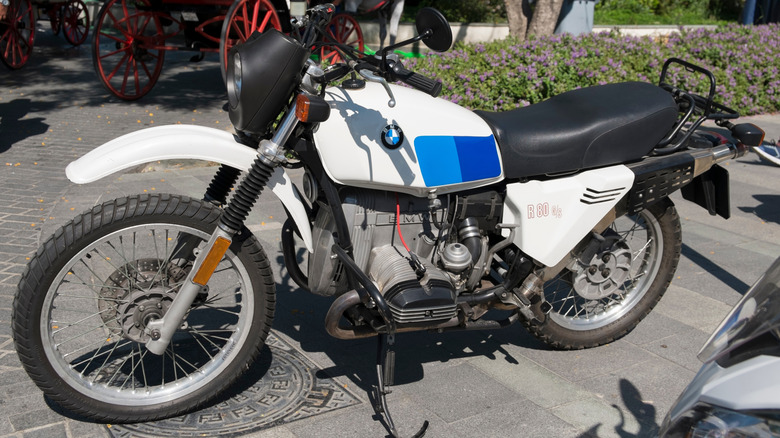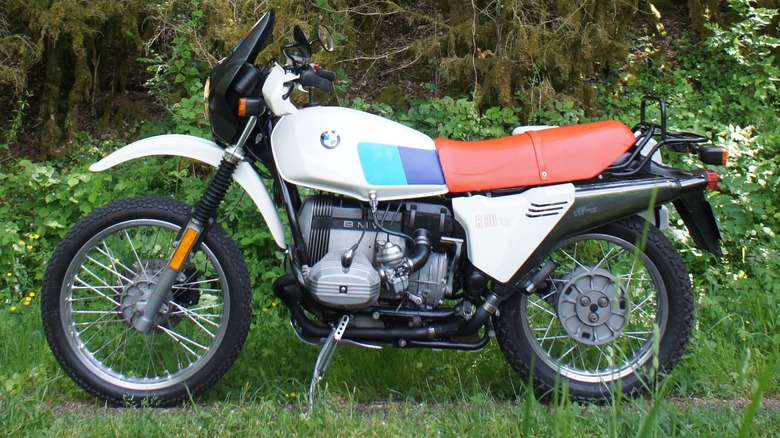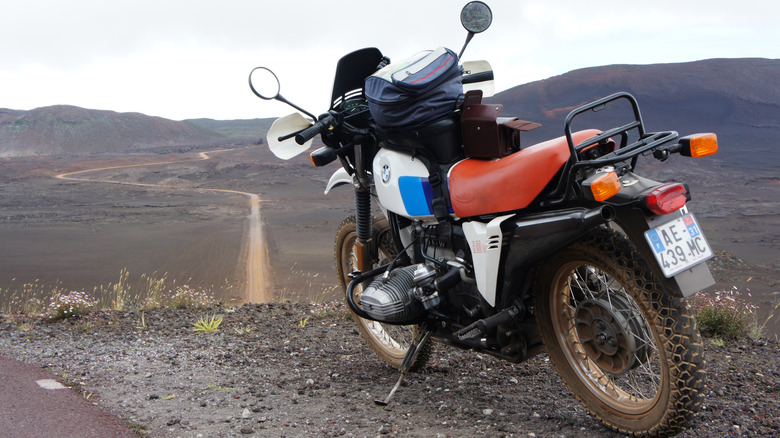BMW R80 G/S: The History Behind The Legendary Adventure Bike
In 1980, BMW Motorrad launched the R80 G/S, one of the best BMW motorcycles ever made, and a bike that defined an entirely new segment: The dual-sport motorcycle. At the time, BMW's motorcycle division was struggling. Japanese manufacturers were outpacing them with faster models. The G/S project was born almost by accident, sparked by a designer's idea to make a two-wheeled equivalent of the ultimate luxury off-roader, a Range Rover. BMW engineers, who already had dirt-racing experience, pieced together a prototype from existing models like the R65, with a single-sided swingarm, and parts sourced from various other BMWs.
The R80 G/S's designation stood for Gelände/Straße (off-road and road), and it combined the best of both worlds. Its 797.5cc flat-twin engine produced 50 horsepower at 6,500 rpm. This was more than enough to handle both rough trails and highway cruising. The Monolever rear suspension, in itself a single-sided swingarm that simplified maintenance, became a hallmark of BMW's engineering. When the G/S hit the showroom floor, it was unlike anything else, capturing the imagination of riders who wanted one bike to do it all. It didn't take long for the R80 G/S to prove itself on the world stage. It racked up multiple Paris-Dakar Rally wins and drew attention from serious adventure riders.
Development on a shoestring
The G/S might have been a legend in the making, but it started life as a skunkworks project. BMW Motorrad's testing department had been quietly building prototypes for off-road use. Laszlo Peres, a BMW test rider, had even raced a homebuilt boxer enduro to second place in the German championship. Meanwhile, designer Hans Muth, inspired by his own experiences driving a Range Rover, pitched the idea of a dual-purpose motorcycle, something that could handle dirt trails and paved roads alike.
Management initially hesitated, as BMW wasn't known for off-road machines, and funds were tight. The project relied heavily on parts from existing BMW models, making the R80 G/S a parts bin special in the best sense of the term. Engineers pulled a main frame from the R65, which is one of the coolest vintage motorcycles you can buy without breaking the bank, matched it to an R80/7 engine, and borrowed forks and wheels from other bikes. The team even used a small R65 fuel tank and a single police-issue seat.
By 1979, new management recognized the bike's potential and greenlit production. The bike debuted in Avignon, France, in September 1980, and then officially at the Cologne Show. At first, the press didn't know what to make of it. But riders responded positively, with more than 6,000 units sold in its first year, twice the forecast.
Legacy and lasting impact
The R80 G/S became the template for every adventure bike that followed. Its Paris-Dakar dominance with riders like Hubert Auriol and Gaston Rahier proved its mettle in the harshest conditions. These wins boosted sales and cemented its status as the go-to machine for globe-trotting adventurers.
BMW refined the G/S over the years, eventually developing the Paralever rear suspension that improved off-road performance by reducing shaft-jacking, a common issue with shaft-drive bikes. Critics might say the modern GS bikes are too big and heavy compared to the original R80 G/S, but their influence is undeniable. With over half a million GS models sold since the G/S's launch, the bike's impact on motorcycle design and culture is massive. Today, the R80 G/S is more than just a piece of history, it's a reminder of how innovation, creativity, and a bit of rule-breaking can change an industry forever.


